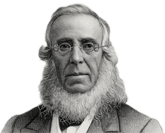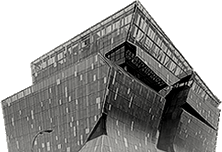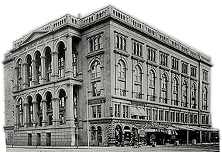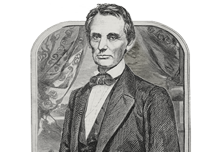Archlog
Intellectual Projects and Frameworks for Dialogue
POSTED ON: October 4, 2016
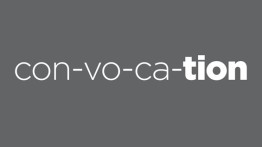
As this semester begins to roll out, I will be joining not only the faculty in their efforts to speculate on the possible trajectories we might take at Cooper Union, but effectively, I will also become their student. In turn, I will be part of the events of each studio, not only the reviews and pin-ups, but also desk crits and the work that happens in the trenches—the only way I can see entering this school and addressing its potentials is from the bottom up.
As I enter into these discussions, I will bring with me certain debates, and certainly these too will transform as I engage you. They are in no particular order, but they imply an ethic with which I would like us to communicate.
First, while acknowledging that architecture comes in many forms—in drawing, models, writing and construction—that one of my areas of concern will be the art of buildings. As we look around us, there is much productive research being done on theoretical ideas, on the environment, on technology, but in fact very few are focused on ‘buildings’ themselves as a source of intellectual speculation and the production of knowledge. Even those working on buildings often get divided into two camps: the first becoming absorbed into the forces of the marketplace, and as such pragmatists at best, while the second group is so focused on the idea of the ‘new’ that they have absolved themselves of the disciplines that are part and parcel of the process of typological transformations, material innovation or the syntax of detailing. In short, I would like to see buildings not only as an end result of our research, but the substance of its process.
Second, I acknowledge that ideas come from many places—from history and culture at large, but also from the “medium” in which you may be working, and I would like us to inspect our way of working more closely. Accordingly, we come to appreciate the idea of depth within the space of a painting by Masaccio, inasmuch as we relish the idea of the flatness of a brushstroke in a Malevich painting, recognizing that these two paintings are not merely different, but also part of a discourse about the nature of representation. In that debate, the nature of the paint as medium is as central to the discussion as the externalities being represented within the painting. For this reason, in modernism, the paint could be argued to be the content itself of the discussion. As such, if some ideas are born out of a medium, others transcend the terms of the medium becoming translated into other media over time. In architecture, we work with ideas about form that are born out of the discipline of geometry, the study of typology, and the science of building technologies. Each arena offers a slightly different lens from which rigors may be extracted, and yet each may lead to different paths of study. To consider all of these areas of knowledge will require a process of reconciliation with the media in which you are working, effectively giving priority to one category over another, as you claim positions. For this reason, finding ways to establish a relationship between part and whole is as challenging as it is inevitable in the process of construction. If some buildings hide their means of construction, others might use the very DNA of its material constitution as the basis for its spatial and formal pliancy. But behind this lies an ethic towards the very medium within which we work, and at a minimum, I would like the forum of the studio to help articulate these predicaments as part of the creative process.
Apropos, the question of medium was brought up on several occasions this past summer, when varied faculty asked each other questions about drawing. Though it was not always apparent to them at the time, it was quite evident from my position as spectator that they were saying the same thing, even if arguing for different agencies. A chunk of charcoal, a carpenter’s pencil, the ink in a rapidograph, the mouse, the software: all technical devices for drawing, all with different representational capacities, but also all instrumental in different ways. While no medium trumps another, we will also need to come to terms with the question of what each medium achieves, if only to examine the relevance of each mode of production in a dynamic moment where many advancements are being made. Recognizing that all aforementioned instruments are pieces of technology, I think the time has come to articulate what each medium achieves in critical ways. Learning in one media does not guarantee an expertise over another, and for this reason, the skilling up of our studios is as much a confrontation with the complexity of our time as it is a dialogue with history.
Third, I would like to end with the site of architecture. We could once say with some safety that architecture’s relevance in great part emerged from its connection to the city, the site, and its environment. To this end, the study of urbanism has gained currency in its ability to bring a public and civic mission to the discipline of architecture. Today, inasmuch as we can recognize the impact of a building on a block, we are also coming to terms with the impact of the human footprint on the earth. The urban impact is no longer about the study of cities, but the study of the globe, the earth. The scale of impact is operating at the dimension of the state, the region, and the country and with no respect for political boundaries. How we find ways to document our ability to design for these scales is very much at stake in a conversation about urbanism today. For this reason, I would also like to open up discussions about the realm of infrastructure, the landscape, and the emerging city, recognizing that the speed of development and construction today requires an agility that is unprecedented for the architect.
These are merely some themes that are currently preoccupying me, and nothing more than the tip of an iceberg. I come to this semester with great enthusiasm to re-engage. There are exciting transformations that await us, and I look forward to working with you in some detail to advance the agendas of the school!
Tags: Nader Tehrani
From Spectatorship to Actors
POSTED ON: September 27, 2016
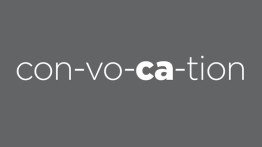
Jacques Ranciere’s essay called “The Emancipated Spectator” offers a comparison between two forms of theater. In one there remains a stark line between the actors and the spectators, with those in the audience functioning as passive receptors of the action on stage. In the alternative model, he describes the necessity of the spectator to be removed from the position of the observer, as if to enter the stage, not merely in empathy, but rather in a state of action. You are familiar with this idea in the works of Brecht, Artaud among others.
He extends this argument to more familiar terrain, in the arena of pedagogy, and permit me here, to quote several passages that I find salient for this occasion:
The role assigned to the schoolmaster…is to abolish the distance between his knowledge and the ignorance of the ignoramus…In pedagogical logic, the ignoramus is not simply one who does not as yet know what the schoolmaster knows…She is the one who does not know what she does not know or how to know it…What she lacks, what a pupil will always lack, unless she becomes a schoolmistress herself, is knowledge of ignorance – a knowledge of the exact distance separating knowledge from ignorance.
Ranciere goes on to argue that the poetic labor of ‘translation’ is at the heart of all learning. It is at the heart of the emancipatory practice of the schoolmaster. What he does not know is stupefying distance, distance transformed into a radical gulf that can only be ‘bridged’ by an expert. Distance is not an evil to be abolished, but the normal condition of any communication…[The schoolmaster] does not teach his pupils his knowledge, but orders them to venture into the forest of things and signs, to say what they have seen and what they think of what they have seen, to verify it and have it verified.
Returning back to the spectator, or the student: emancipation begins when we challenge the opposition between viewing and acting; when we understand that the self-evident facts that structure the relations between saying, seeing and doing themselves belong to the structure of domination and subjugation. It begins when we understand that viewing is also an action that confirms or transforms this distribution of positions. The spectator also acts, like the pupil or the scholar. She observes, selects, interprets.
She composes!
Tags: Nader Tehrani
Pedagogical Transformations
POSTED ON: September 20, 2016

As some of you may know, many of the faculty members have been patiently working alongside me over the summer to open up discussions about the nature of pedagogy at Cooper Union. I think what has been the most important part of this process is the exposure it has offered between disciplines, between ideological camps, and moreover, it has set up opportunities for building bridges between courses, deadlines and projects.
During this process, I learned much about the power of words, and how they may serve us in their precision, and in the care with which we use them. In any architectural project, there is a delicate balance between the physicality of architecture on the one hand, and the words that come to engage a work of architecture on the other, the sum total of which may encapsulate “building ideas”—that is, that forms contain ideas inasmuch as ideas may come in many forms. I am reminded of Foucault’s short essays in Ceci n’est pas une pipe, his playful yet revealing text on Magritte’s painting, and the ambiguous ways in which meaning is rendered – and indeed, the slippery relationship between words and images.
I also learned during this process that, beyond precision, words also require a tolerance, much like a construction joint, if you will: a reveal, a space for mistakes, but also a way in which perfection may be cast even when things do not completely align. What is maybe worse than imprecision is the idea that someone might use the rigidity of terms, or their proposed meanings to construct adversity where there is none. And herein lies a delicate balance I would like to create for this semester: the ability to create debates though our differences, but also to build a space of convergence, of tolerance and of difference such that these necessary frictions can be absorbed by the collegiality of opposing views.
Indeed, as the faculty set out to craft their individual positions, their collective drive towards consensus, and my appeal to them to attempt to draw out a larger narrative for the school at large, I also stumbled across several other realizations.
First, in acknowledging the omnipresence of images and information, the result of the access we have to the Internet—the omnipresence of the hotspot access we have to Wi-Fi if you like—I see these discussions as an opportunity to develop a “cold spot,” a respite for us to think about our project, rather than be pulverized by everything around the clock. From this may emerge a school of thought, and indeed, in this day and age where geography, location, culture and language matter less and less, I think that a school of thought is even more powerful, because it is the one irreducible thing that belongs to this place that no one else has access to in an intimate and immediate way.
Despite this, or maybe precisely because of this, we have all also had to confront our own history at Cooper Union; in all its diversity and intensity, it has had a rich set of characters, debates and biases over the years, but they have been anything but monolithic. To this end, what might be the most dangerous aspect of this proposition is if it is misinterpreted—or misused—to “essentialize” what someone thinks Cooper is, or has been. We are at a critical crossroad now, and the time has come to delve deeply not only in the way we teach, but the way we learn. Part of that teaching process is to bring a certain expertise to the table, but part of the learning process that is its counterpart is to leave room for risk, even if that opens you up to failure. There is nothing more noble than a productive failure in this context. No, it is not an F, as such, but rather the audacity to take on an impossible project, to research it inside out, and to demonstrate the depth of discoveries we make through iteration as the basis for our advancement.
It is here, where we may get beyond essentialization, to leave room for discovery, to become, to transform, and to imagine that we can yet project forth without the necessity of the certainties we inherit from legacies, histories, or conventions. This is not a repudiation of history, nor of our culture, but simply the acknowledgment that part of the learning process requires the gradients of “ignorance”, if only to leave room for the intellectual transformation.
Tags: Nader Tehrani
Mutsurō Sasaki: Morphogensis of Flux Structure
POSTED ON: September 19, 2016
Mutsurō Sasaki is an expert of shell structures and a pioneer in the field of computational morphogenesis in structural engineering. His research focuses on the development of design techniques using structural optimizations and form findings based on the mathematical principle of structural mechanics. He has developed the sensitivity analysis method for free-curved shell structures that defines optimum structural solutions within complex design criteria. His research-based practice extends the analytical works of Antonio Gaudi, Heinz Isler, and Frei Otto into the field of computational designs that has helped shape the contemporary architectural scene in Japan and abroad.
Tags: Steven Hillyer

